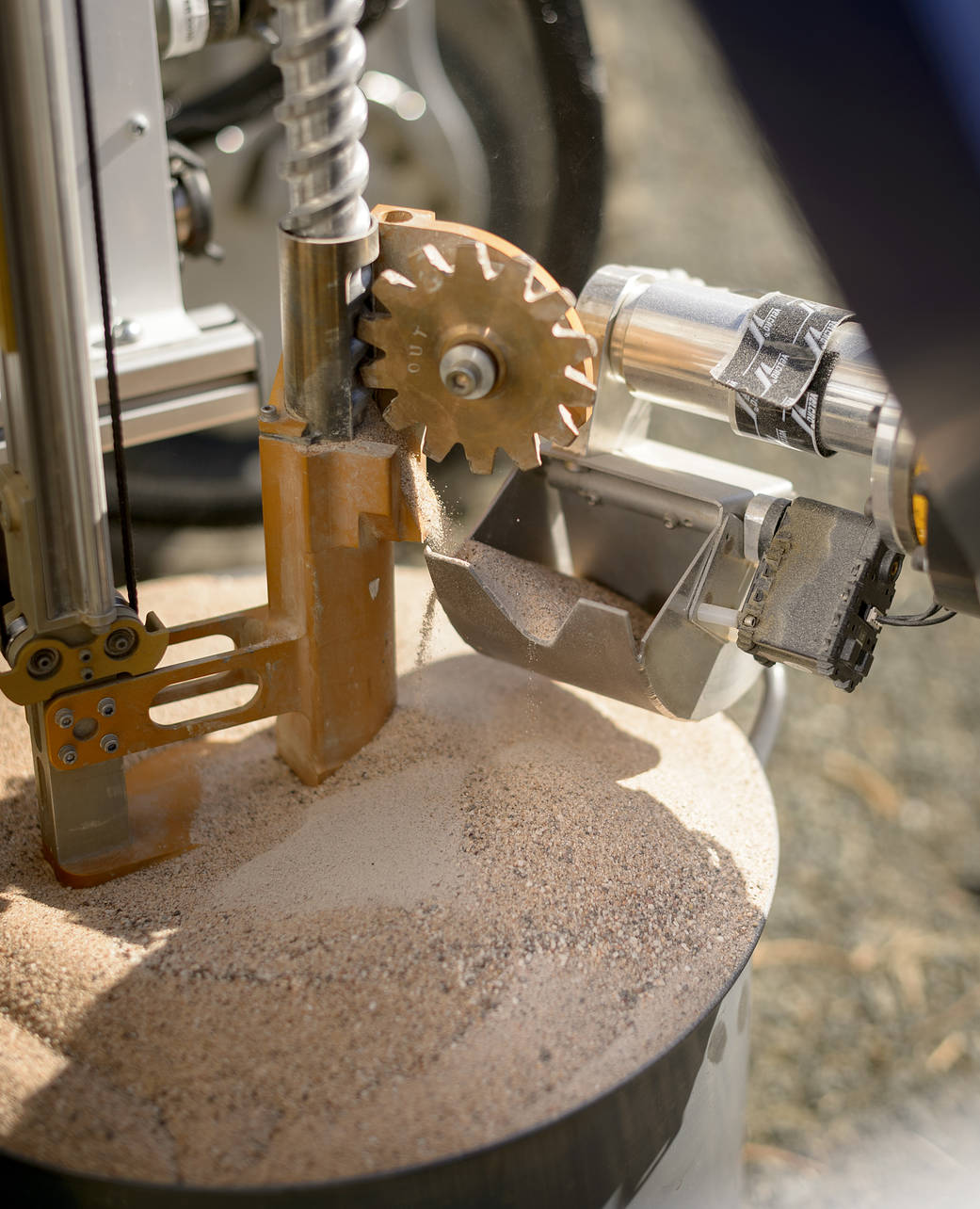A sandy soil sample pours into the collection scoop, in this close-up of the ARADS life-detection rover at work during initial checkout tests at Ames. A prototype that could inspire designs that will be sent to Mars in the future, the rover can autonomously drill below the surface and pull up samples that are transferred to the scoop. It then delivers the soil to several instruments on board the rover that will analyze it for biochemical indicators of life — all without direct control by any human operators.
+++
The Atacama Rover Astrobiology Drilling Studies, or ARADS, project is designing tools and techniques that could be used to search for life one day on Mars or other places in the Solar System. The team’s prototype rover combines the ability to move across the surface, drill down to collect soil samples, and feed them to several life-detection instruments on board. The extreme conditions of Chile’s Atacama Desert provide one of the most Mars-like environments on Earth, where the team can test and refine these technologies and methods.
ARADS is led by NASA’s Ames Research Center in California’s Silicon Valley. Partners include NASA centers Goddard Space Flight Center in Greenbelt, Maryland, and the Jet Propulsion Laboratory in Pasadena, California, as well as Johns Hopkins University in Baltimore, Maryland, Honeybee Robotics in New York, the University of Antofagasta and CampoAlto SpA, both in Chile, and Spain’s Center for Astrobiology.
Credit: NASA/Ames Research Center/Dominic Hart






























